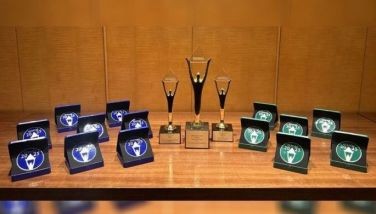Averting a water crisis

As an archipelago separated by miles of oceans and seas from its neighboring countries, the context of the Philippine initiative to have a dedicated government office to oversee the management of water resources is far from the urgency of continents that are home to many countries.
It is, nonetheless, an important move that attempts to create order in foreseen and anticipated disorders. Water, after all, is a resource that is more precious than oil, not when given a monetary value, but as a source of life and livelihood.
Climate change is driving the speed by which conflicts over water are shaping up or escalating. Globally, two hotspots are worth mentioning. In Asia, China wields an upper hand being in control of the source of 10 major rivers that flow into India, Bangladesh, and Vietnam.
The Middle East is also shaping up to be another water-stressed region, facing issues of water scarcity, over-extraction, and competition between countries sharing transboundary water resources. The Nile River Basin, Jordan River Basin, and Tigris-Euphrates River Basin are some areas with historical water-related tensions.
Signs of water resource-related issues are building up too in other parts of the world where rivers are shared by two or more countries. Aggressive dam building projects by countries where water flows originate are a source of irritation. Turkey comes to mind after more than 20 dams built on the Tigris and Euphrates rivers significantly reduced water flows to Syria, Iran, and Iraq.
While some affected communities choose to migrate, others put up a fight. For example, in response to threats by China to build a dam that would curb water flow into India, a border conflict between the two countries has erupted and caused heightened militarization in the affected areas.
Fragmented
The Philippines shares no river sources with other countries, but provinces and regions do. And while potential conflicts may arise in determining the allocation of water to the different local government territories, such have not seriously escalated to warrant the taking up of arms.
During his recent State of the Nation Address (SONA), the President has certified as urgent the need for Congress to pass the creation of a department that will focus solely on water resource management, even after issuing just three months earlier an executive order (EO) creating a water management office under the Department of Environment and Natural Resources (DENR).
The EO instructed all water-related agencies like the National Water Resources Board (NWRB), Metropolitan Waterworks and Sewerage System (MWSS), Local Water Utilities Administration (LWUA), as well as local water districts to be under the DENR on a transitory basis pending the creation of a new department.
The Philippines has long taken for granted its water resources, and many Filipino households still pay almost nothing for their daily household water needs. Those who do not have access to private or local government water distribution systems continue to rely on deep wells or rivers and streams.
At present, the country’s water resource management system is fragmented, with no overarching governance system that had bred a motley of different and sometimes conflicting local ordinances. The National Economic Development Authority (NEDA) has been batting for the longest time to harmonize the planning and management of land, water, and coastal resources.
Unclean water
The Water Resources Management Office (WRMO) created through the EO will have its hands full pending the formation of a water department. Its biggest mandate will be the formulation of a water resources master plan that ultimately will dictate how the nation accesses and uses water.
A few of its priorities will be to resolve conflicts between water-related government agencies and to implement stalled water supply projects worth P14.6 billion in rural areas.
The most critical task, though, will be to address what the President deems as the biggest crisis: providing some 11 million Filipino families, or about half of the population, with access to clean water.
Affected families currently tap their water needs from tainted deep wells or unsanitary surface water run-offs that definitely pose a threat to the health of people, especially if used for drinking. These most vulnerable are at the outskirts of urban areas where sedimentation and pollution have started to creep into traditional water sources.
Poor waste management has also become the source of water pollution, where human waste thrown in canals and rivers breed waterborne diseases that affect the health of whole communities mostly reliant on underground aquifers for their water needs.
Enhanced private sector participation
Without doubt, ensuring access to safe and sufficient water for domestic, agricultural, industrial, and environmental needs requires proper planning, regulation, and allocation of water resources, and a dedicated department may be seen as a way to centralize efforts and expertise in managing water resources more efficiently.
With multiple stakeholders, including government agencies, local authorities, private companies, and communities involved, the task of coordinating for a master plan will be complex. Among the policies that bear watching will be related to water pricing, sanitation, and water-related infrastructure.
The entry of the private sector, for one, has already significantly expanded investments not only in distributing water to communities, but also in building dams and watersheds in recent years as pressure to supply adequate water to expanding cities continues.
Clearly, the establishment of a water department is a step to dictating a sense of reason and rhyme on how our country deals with the increasing water demand of more Filipinos.
Facebook and Twitter
We are actively using two social networking websites to reach out more often and even interact with and engage our readers, friends and colleagues in the various areas of interest that I tackle in my column. Please like us on www.facebook.com/ReyGamboa and follow us on www.twitter.com/ReyGamboa.
Should you wish to share any insights, write me at Link Edge, 25th Floor, 139 Corporate Center, Valero Street, Salcedo Village, 1227 Makati City. Or e-mail me at reydgamboa@yahoo.com. For a compilation of previous articles, visit www.BizlinksPhilippines.net.
- Latest
- Trending


























